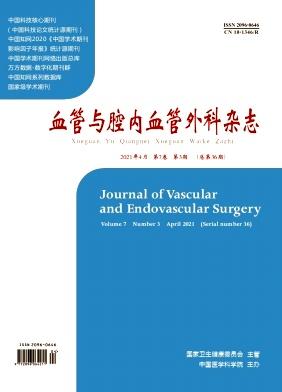Drug-eluting stent for recurrent mesenteric artery in-stent restenosis.
引用次数: 5
Abstract
PURPOSE To report the use of a drug-eluting stent (DES) for treatment of symptomatic in-stent restenosis (ISR) in the superior mesenteric artery (SMA). CASE REPORT A 79-year-old woman suffering from chronic renal failure and needing dialysis was admitted for vomiting, postprandial abdominal pain, and weight loss for 3 months. Computed tomographic angiography (CTA) documented massive calcification of the vascular bed, mainly in the aorta, and a very tight ostial stenosis of the SMA. A 4.5-x20-mm Genesis stent was deployed at the ostium, with good angiographic result and immediate symptomatic benefit. After 3 months, symptoms recurred; angiography demonstrated ISR. Percutaneous angioplasty with a 4-x15-mm cutting balloon was performed. The patient remained asymptomatic for only 2 months; recurrent ISR at this time was treated with a 3.5-x24-mm coronary TAXUS Express paclitaxel-eluting coronary stent deployed inside the previously implanted stent. Under prolonged double antiplatelet regimen, the patient was asymptomatic at the 8-month follow-up; CTA demonstrated patency of the SMA. CONCLUSION Considering the high rate of restenosis and the periprocedural complications described with endovascular treatment of SMA stenosis, a drug-eluting stent may be a good option not only for the treatment of restenosis but also in de novo lesions, at least when the vessel diameter is <4.5 mm.药物洗脱支架治疗复发性肠系膜动脉支架内再狭窄。
目的报道药物洗脱支架(DES)治疗肠系膜上动脉(SMA)症状性支架内再狭窄(ISR)的应用。病例报告:一名79岁女性患有慢性肾衰竭,需要透析,因呕吐、餐后腹痛和体重下降3个月入院。计算机断层血管造影(CTA)显示血管床大量钙化,主要在主动脉,以及SMA非常狭窄的口狭窄。一个4.5 x20 mm的Genesis支架放置在开口处,血管造影结果良好,症状立即得到改善。3个月后症状复发;血管造影显示ISR。采用4 × 15毫米切割球囊进行经皮血管成形术。患者无症状仅持续2个月;此时复发性ISR在先前植入的支架内放置3.5 x24 mm的冠状动脉TAXUS Express紫杉醇洗脱冠状动脉支架。延长双抗血小板方案,随访8个月无症状;CTA显示SMA通畅。结论考虑到血管内治疗SMA狭窄的高再狭窄率和术中并发症,药物洗脱支架可能是一个很好的选择,不仅是治疗再狭窄,而且对于新发病变,至少当血管直径<4.5 mm时。
本文章由计算机程序翻译,如有差异,请以英文原文为准。
求助全文
约1分钟内获得全文
求助全文

 求助内容:
求助内容: 应助结果提醒方式:
应助结果提醒方式:


